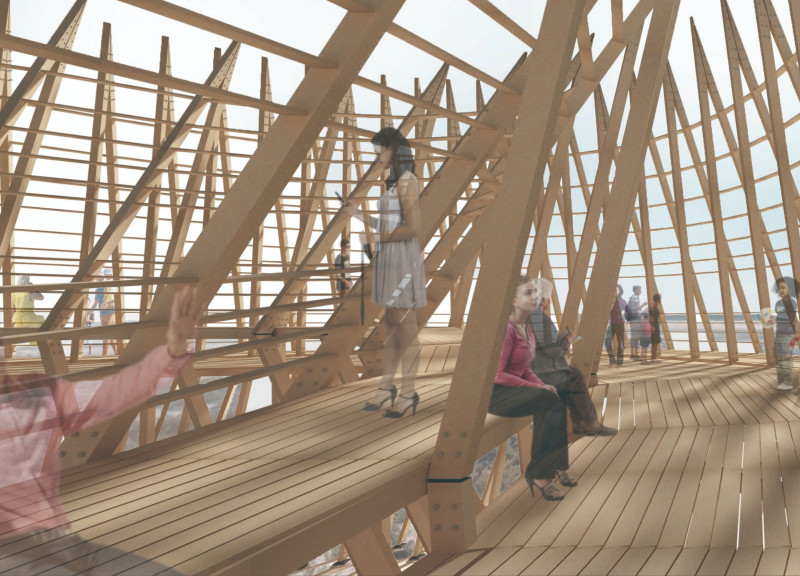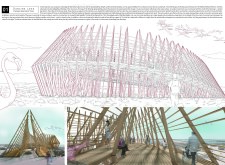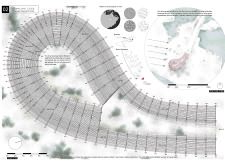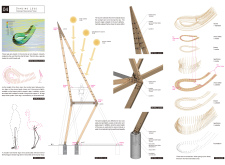5 key facts about this project
The Flamingo Observation Tower is located within the Al Wathba Wetland Reserve. It serves as an observation point for birdwatching and connects visitors to the surrounding landscape. The design embodies the elegance of flamingos through a flowing, arc-shaped form. This structure enhances both the visual experience and the functionality of observing the wetland ecosystem.
Concept and Form
The design emphasizes practicality while aligning with the natural environment. The arc shape of the tower allows for broad observation opportunities and reflects the Barchan formations, which are shaped by wind. This connection to nature captures the graceful movements of flamingos, creating an inviting space for users to explore their surroundings.
Structural Approach
The observation tower features slender frames that mimic the legs of flamingos. These frames vary in height, rising up to 12 meters above the ground. They are constructed using galvanized steel plates, focusing on durability and ease of assembly. As the height increases, the frames come closer together. This design choice introduces a slight tension that balances stability and movement, adding visual interest to the overall structure.
Spatial Experience
An important aspect of the tower is its dual arc-shaped belt system. The inner and outer belts differ in height, providing expansive viewpoints for visitors. Gaps between these belts create seating areas where users can pause and take in the scenery. This arrangement encourages interaction with the environment, making birdwatching more accessible and enjoyable.
Environmental Integration
Louvres extend from the handrail to manage sunlight and wind. This feature increases visitor comfort while also respecting the local wildlife. The structure's design minimizes disturbance to flamingos, allowing the tower to blend into its surroundings. The frames grow denser as they rise, providing a camouflage effect that helps preserve the integrity of the wetland habitat.
The design culminates in a gentle upward movement, where the louvres create a shifting play of light and shadow. As the day progresses, this dynamic interaction with the sun enriches the overall experience of observing the wetland, highlighting the connection between architecture and nature.






















































